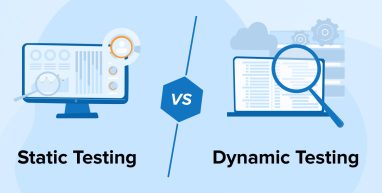
The goal of software testing services is to identify bugs in the program and ensure that it functions as intended before being released to the public. It involves running software/system elements through an evaluation process, either manually or automatically, to determine the value of one or more attributes of interest. The purpose of software testing is to identify inconsistencies, gaps, and omissions in the specifications. In simple terms, software testing is the act of ensuring that the program being tested is correct.
In this article, we focus on two software testing methods that contrast each other in terms of techniques. Let’s begin the debate of static testing vs dynamic testing.
1. What is Static Testing?
Static testing is also known as non-execution testing or verification testing, does not involve running the code. This process can be performed manually or with the help of automated tools. During static testing requirement files, architectural records, and code are all examined, and feedback is added to the corresponding task document. The program is assessed in a non-runtime environment for security testing when it is not actively being used.
Static testing aims to identify any bugs, security exploits, or harmful code in the codebase through static analysis. It is conducted at the initial stage of the development life cycle. You can perform structural and statement coverage testing under static testing. Documents such as requirements specifications, architectural files, source code, test plans, test scripts, test cases, and website content can all be subjected to static testing.
Here is what Quora user says about Static Testing.
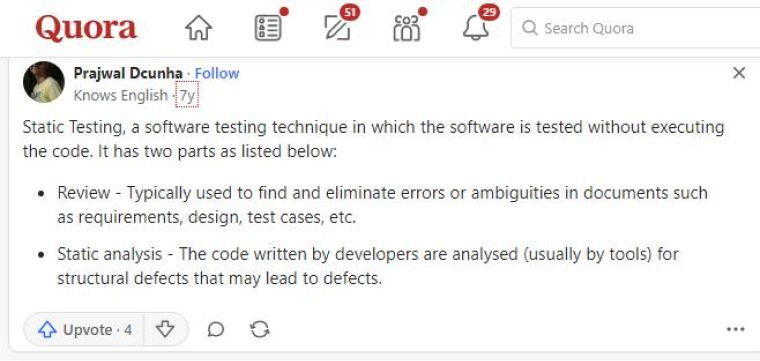
1.1 Benefits of Static Testing
Here are the benefits of static testing:
- Bugs can be identified early in the software development process through static testing. By reviewing artifacts before executing them, errors can be detected and fixed quickly, which saves time and work later in the development process.
- It is cheaper to use static testing methods than dynamic testing methods. It costs the company significantly less to find and fix bugs identified during static testing. It lowers the costs of development, testing, and running the business as a whole.
- It identifies syntax errors, coding mistakes, and challenges with following coding standards. This makes the code simpler and easier to manage.
- Static testing speeds up development by ensuring that data is simple and accurate while improving design.
1.2 Disadvantages of Static Testing
Here are the disadvantages of static testing:
- It’s possible that static testing won’t identify every issue that could happen during runtime. Some bugs might not show up until the software is run during dynamic testing.
- The effectiveness of static testing depends on the skills, experience, and knowledge of the reviewer.
- It may take a while to do static testing, especially for big or complicated tasks.
- If you only perform static testing and do not include dynamic testing, you may develop a false sense of security because some bugs might not show up until the software is running.
1.3 Static Testing Techniques

Static testing methods are done in two different ways.
1. Review
Human inspections or assessment meetings identify possible flaws in the system. All the teammates who are there in the project’s development regularly attend these sessions.
You can use SRS (System Requirements Specifications) documents to categorize the differences.
Each review is then subdivided into the following parts.
- Informal Reviews: Initial, informal reviews are conducted with the SRS paper’s originator and all other teammates present. Everyone can share their opinions on any flaws in the report. Defects can then be identified in their early stages.
- Walkthroughs: Experts and knowledgeable individuals conduct walkthrough inspections. The purpose of this is to eliminate the possibility of any bugs or flaws being overlooked.
- Technical/peer review: Third, there is technical/peer review, in which coworkers evaluate each other’s documents for errors and then work together to address them.
- Inspections: Inspection is the examination of a document by a higher entity.
2. Static Analysis
This is an alternative method for conducting static tests. Here, programmers’ own programs are evaluated for quality control purposes. The static analysis is performed using various tools including CheckStyle, SourceMeter, and Soot are just a few examples.
You can break down static analysis even further by looking at Data Flow, Control Flow, and Cyclomatic Complexity.
- It is well known that “Data Flow” and “Stream Processing” are closely related concepts.
- Second, Control Flow determines how orders and instructions are executed in a program.
- The difficulty of a piece of code may be quantified using the term “cyclomatic complexity.” The range of possible outcomes in the software’s control flow graph is inversely related to this.
2. What is Dynamic Testing?
Dynamic testing, also known as execution testing or validation testing, involves running a. program or algorithm. During this process, the efficiency, memory use, and CPU load of the system as a whole are evaluated. To sum it up easily, that’s why it’s called “Dynamic.”
The primary goal of dynamic testing is to verify that the software performs as expected and, meets all specified requirements of the organization. Sometimes referred to as validation testing or execution testing.
In dynamic testing, the program is executed, and its results are compared to the expected outcomes. Both black and white box dynamic testing are conducted at all testing stages. It includes integration testing, system testing, unit testing, etc.
2.1 Benefits of Dynamic Testing
Here are the benefits of dynamic testing:
- Dynamic testing helps identify mistakes, speed issues, memory leaks, and other problems that can only be observed while the program is running.
- Dynamic testing helps ensure that modules, databases, and APIs work well together, so the system works as intended.
- Dynamic testing provides an accurate evaluation of the software’s quality and dependability, making sure that it meets the requirements and works the way it’s supposed to. This helps to make sure that the software works right in a variety of situations.
2.2 Disadvantages of Dynamic Testing
Here are the disadvantages of dynamic testing.
- Dynamic testing can take a long time when there are many complicated systems and test sets.
- In complicated systems, debugging and identifying the exact cause of issues requires a significant amount of resources.
- Sometimes it can be difficult to conduct tests in unusual or uncommon situations.
- There are a lot of different inputs and execution lines, so dynamic testing might not cover all of them.
2.3 Dynamic Testing Techniques
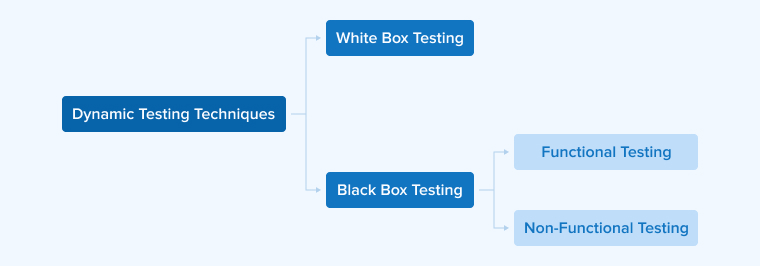
There are two approaches to conducting dynamic testing of a software or system.
- White Box Testing
- Black Box Testing
1. White Box Testing
In white-box testing, the examiner and the software are both kept at all times. Because of this, the analyst is well-versed in the system’s inner workings and code. The code is thoroughly examined for bug detection.
Since they have a better knowledge of the system’s structure and inner workings, programmers do white-box testing.
One important aspect of white box testing is data flow/control testing. As was said above, the purpose of data flow testing is to ensure that the intended pathways through the program are being followed.
After completion of white box testing, the system is delivered to the analysts for black box testing.
2. Black Box Testing
In black box testing, analysts and test teams do not have access to the app’s source code or infrastructure. The purpose is to assess the software’s performance using various data sources. They ensure that the program is functions properly and produces the desired results. One can perform black-box testing without any previous knowledge of computer programming. It is only appropriate for the tester to be informed about the system’s requirements and parameters.
Further subcategories of Black Box testing are:
- Functional Testing
- Non-functional Testing
- Functional Testing: When testing a software’s functionality, testers ensure it meets its criteria. Each component is rigorously evaluated, and the whole system is assessed to ensure it operates as intended. The results are validated against the inputs. Unit testing, integration testing, system testing, and user acceptance testing are all components of functional testing.
- Non-Functional Testing: In non-functional testing, you can examine metrics such as load, turnaround time, and efficiency. The purpose is to determine whether the software meets the user’s expectations. Load testing, performance testing, security testing, compatibility testing, etc. all fall under the umbrella of non-functional testing.
3. Difference between Static Testing and Dynamic Testing
Let’s take a look into the differences between static testing vs dynamic testing techniques:
| Static Testing | Dynamic Testing |
|---|---|
| Static testing is known as verification testing. | Dynamic testing is known as validation testing. |
| Static testing is a type of white box testing, which is performed early in the software development life cycle. | In contrast, dynamic testing is performed later in the software development lifecycle. |
| More statements are tested in less time during static testing in contrast to dynamic testing. | Since dynamic testing only checks a fraction of the code, there is a shorter statement phase. |
| It is performed before code deployment. | It is performed after the code deployment. |
| At the stage of the verification process, this is carried out. | It is performed during the validation stage. |
| No code is run during these tests. | This kind of action is carried out by the execution of code. |
| Code and documentation may be evaluated with static testing. | Software inefficiencies can be revealed through dynamic testing. |
| Static testing techniques involve making checklists for the testing process. | Dynamic testing involves running test cases for the testing process. |
| Static testing procedures consist of things like walkthroughs and code reviews. | Dynamic testing consists of both functional and nonfunctional testing, as stated earlier. |
4. Conclusion
Within the context of the software development process, both static and dynamic testing play an essential role. The organization must carefully consider which of these software testing strategies to employ for their software products. To maximize the advantages of testing and pick the best tools for the job, it’s important to have a clear understanding of the advantages and disadvantages of the various approaches.
In this article, we presented every aspect of both static testing vs dynamic testing to you so you know the best for you and your upcoming projects.
FAQ
What is Dynamic Testing Examples?
Unit testing, integration testing, system testing, and acceptance testing are all types of dynamic testing.
Which tool is used for Static Testing?
SonarQube is an open-source static analysis tool that checks the quality of code all the time. It identifies technical debt, bugs, and security vulnerabilities across various programming languages. It works with 29 languages and checks the quality of all the languages used in the projects you’ve created.


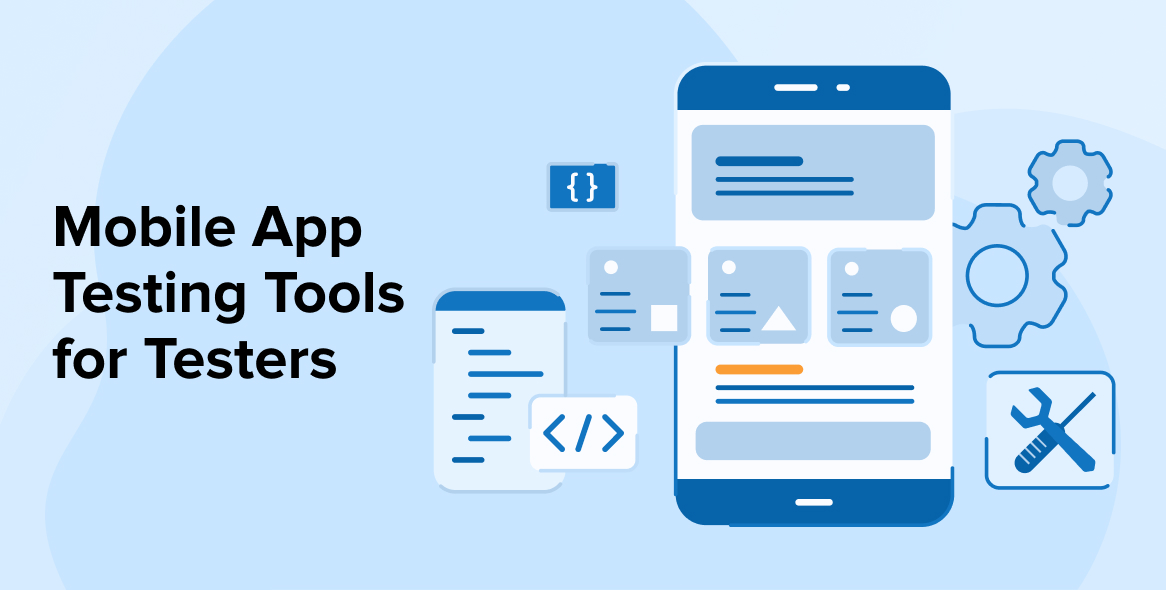

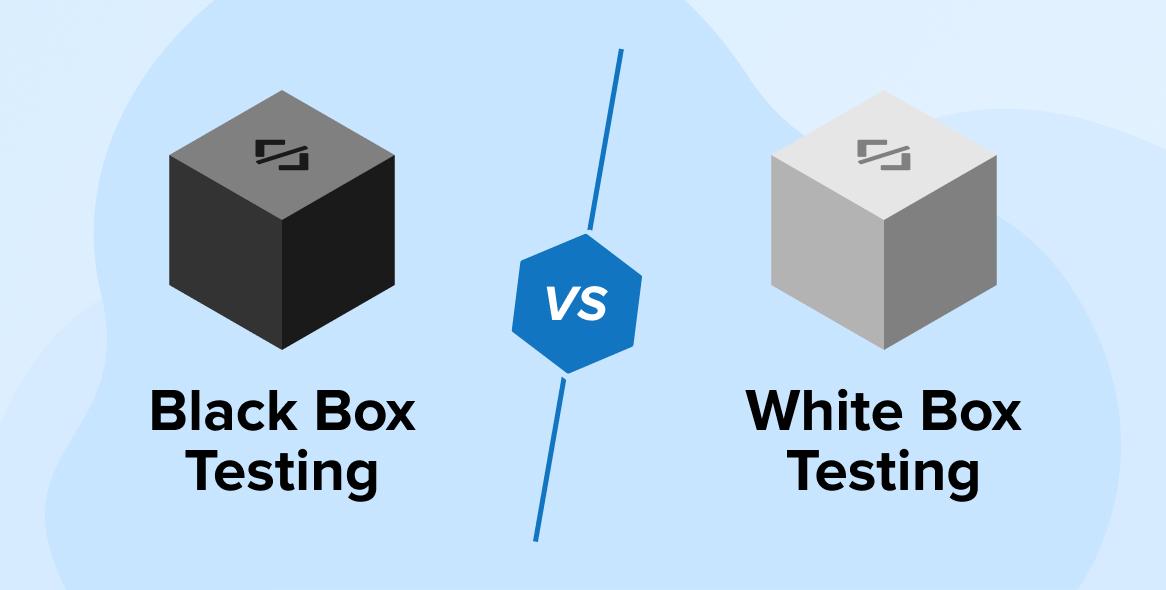

Static Testing and Dynamic Testing are two important types of software testing. This article gives deep insights to learn about these two types of testing and how they play an essential role to ensure the quality of the software product. Eventually, a mix of the two strategies can assist with guaranteeing extensive and compelling testing.
Your article on static and dynamic testing is excellent. It is quite instructive and useful, in my opinion. I acknowledge that both methods of testing are necessary to guarantee the quality of software. I would also add that in order to gain the most thorough coverage of any flaws, it is crucial to combine static and dynamic testing.